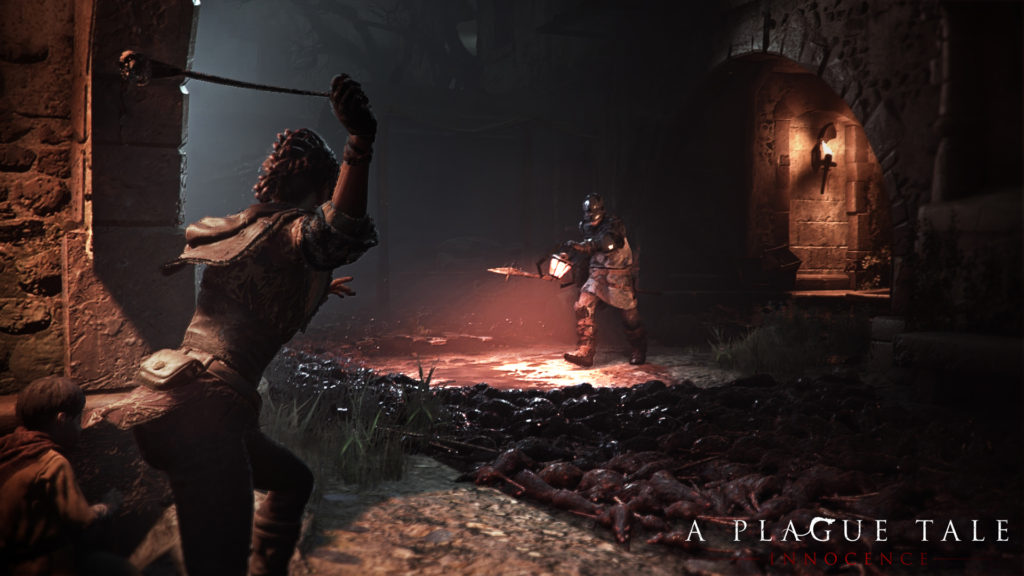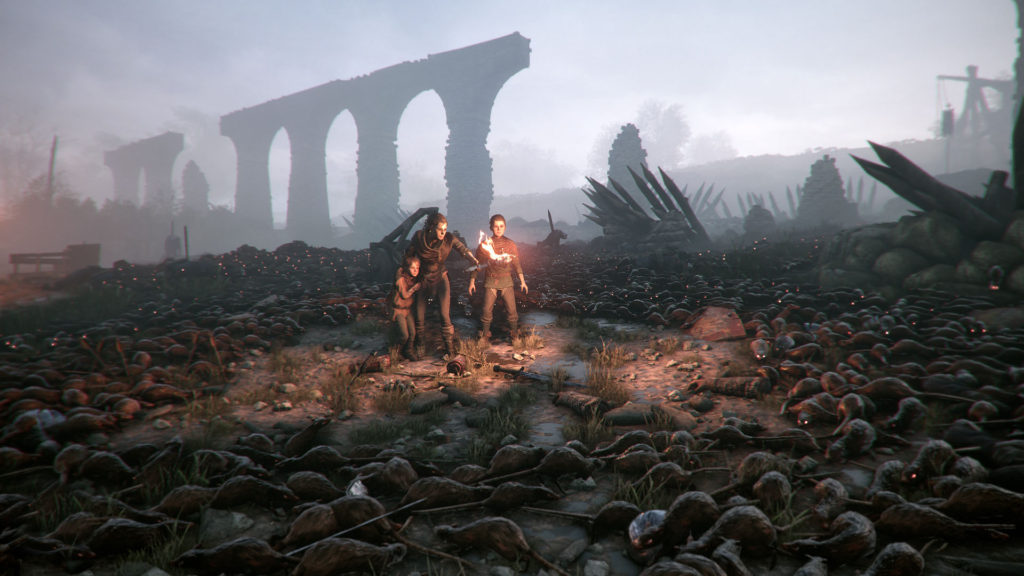
A Plague Tale Innocence: Flowers Grow in the Strangest Places
Have you ever started a game that immediately made you uncomfortable within the first few minutes? I know I have, but I don’t think one has done so with such fervour as Plague Tale. That’s not exactly a negative thing, either. There’s just something sobering about being put in the shoes of a young girl who loves her family, despite it being broken and full of lies. Even when playing Amicia, the protagonist of this story, at the start, where the world around her is full of vibrant colours like yellow and blue, the sharp edge of an exhausted family is easy to pick up in the tone of father’s voice, or the whispered rumours of the De Rune servants.
To say that Plague Tale is a depressing game isn’t entirely true, but neither is it false. In the first 10 minutes you have no choice but to watch as Amicia’s beloved hound, Lion, is killed in front of her. Then her family and the rest of her household. It leaves only her and Hugo, her little brother, to run away from the Inquisition that wishes to capture Hugo for unknown reasons. So yeah, kinda depressing.
But despite the whole ‘innocence is lost’ thing being hammered against your skull for the majority of the game as you kill adults, enemy and victim alike, it was the moments where Amicia and Hugo were allowed to be children again that stuck with me the most.

Early on in the game, you come across flowers. As it turns out, Hugo likes flowers a lot and will run off and present them to you, rambling on about the properties and telling Amicia what they mean. It’s often a small, and very missable, moment in each chapter, but it’s also incredibly heartwarming. It’s the small light in the dark, so to speak, and I often went out of my way to find these flowers and let Hugo put them in Amicia’s hair.
Though, it wasn’t just the meaning of these flowers that stood out, but their location. Some were found in obvious, grassy areas. Others were found resting beside a dead body, or in a dark, wet pit where rats scurried only a few feet away. And each time Hugo found a reason to smile, whether it be fake or genuine, and told Amicia more about a flower. I’d be lying if I said that didn’t make me weep like a baby more than once.
I’ve often found that goodness and a willingness to believe in people is so sparse in this world,especially today, and has led to so much suffering. It would be so easy for Plague Tale to continue with this streak, but just like the real world, there is hope and for Plague Tale it goes beyond just flowers – but the relationship between Amicia, Hugo and the rest of the people they meet throughout their journey.

Found family is a trope that I can’t help but love, and while Amicia and Hugo are related, they barely know one another. And so, they come together through the harsh circumstances they’ve been placed in. They aren’t alone either, Amicia and Hugo come across other characters like Lucas, Mellie, Arthur and Rodrick and end up holding up in an abandoned castle. It’s a little far-fetched, but I couldn’t help but feel that it was a home that the group had made for themselves and if I’m being honest, is a home that you didn’t make your own even worthy of that title?
There’s so much to love about Plague Tale, but I truly don’t believe I could explain it well enough and so, only have one thing to say: play it for yourself. Despite how dark the game can be, it’s the moments of hope that shine the brightest.





